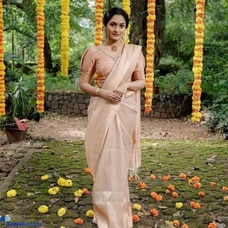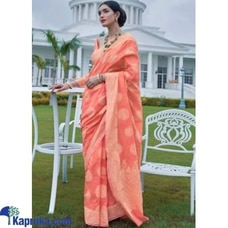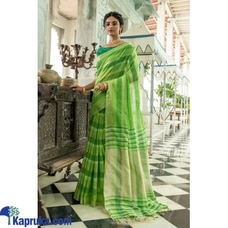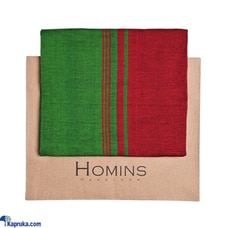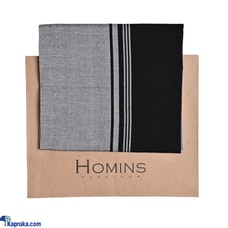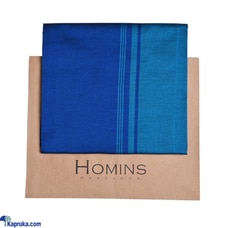


Few will disagree that a saree cloaked around a female form would look graceful and elegant in any way you look at it. Indeed, to most, the refinement and finesse of a saree cannot be equated with any other type of garment. In fact, despite the countless fabrics used and draping styles, there is something distinct about handloom sarees in Sri Lanka. Without a doubt, a handloom saree is a hallmark in the fashion space.
The handloom industry in Sri Lanka has a history dating back over 2500 years. Historically, Sri Lanka has traded handloom textiles with nations like India, China, and Middle Eastern countries. Uniquely, the handloom textile industry is one of the country’s oldest traditional crafts. Similarly, handloom weaving is a skilled profession, and there is a revival of the craft today, with many young aspiring artisans taking up the trade.



Moreover, this is an industry like so many others where women form the backbone of the craft. Against this backdrop, handloom sarees in Sri Lanka have taken to the fashion ramps. In a similar manner, this is due to the awareness of modern design trends combined with traditional craftsmanship and the influx of new processing techniques. Thankfully, handlooms, particularly handloom sarees in Sri Lanka, have been given a new life.
Why are handloom sarees in Sri Lanka a good buy?
We all love our favourite handloom sarees in Sri Lanka! Every handloom saree is exceptional, be it the luminous silk or the feather-light cotton. In addition, it is the creativity of every skilled craftsman that is embedded in every handloom saree. Of course, it is undeniably true that every finely-crafted handloom piece always wins the creative battle over the machine-made. However, we know they cost a little higher than the other machine-made sarees. In contrast, that is because of the time and skill that go into weaving a saree and the amount of hard work and effort put in by the craftsman.



Work, Effort, and Time
The time it takes to weave a complete handloom saree is substantial, depending on the pattern. Moreover, the skill of weaving is safeguarded and passed down through generations. Besides, it is painstakingly done by hand and isn™t a fast-paced job. Regardless, it is a labour of love and one has to pay the price for the effort put into the saree.
Naturally derived material
The majority of handloom sarees in Sri Lanka, are made from naturally produced and obtained raw materials and dyes. On the contrary, they are not only environmentally friendly but also skin-friendly in the hot climate or on summer days. Above all, as the natural raw materials are chemical-free and toxin-free, they do not have a bad effect on your skin when you sweat. In reality, procuring and processing the raw material again takes a lot of effort and time



Uniqueness and durability
The best part about handloom sarees is that they are durable and sustain a long time as they are made from natural fibers. Of course, with naturally procured raw materials, these handloom sarees will last through decades. In fact, many designers are now turning back to the roots and prefer opting for handloom pieces for their collections. For one thing, the uniqueness of a handloom piece is rare and beautiful.
Bollywood™s love with the saree
From a fashionista to a Bollywood diva, a saree seems to be the choice of attire for public appearances, movie events, or even the Cannes red carpet. For instance, Bollywood actress, Aishwarya Rai Bachchan set the saree fashion trend at Cannes to be followed by many afterwards. Subsequently, Anushka Sharma, Kareena Kapoor, Sonam Kapoor plus every other Bollywood actress have all seen wearing a saree for the most regal public engagements.



Tip: To look slim you must drape the saree tightly around the body. Ideally, the saree should not fall loose from any angle.
The revival of the handloom saree in Sri Lanka
Before the arrival of mass-produced garments, Sri Lankans wore hand-woven clothes. The hot and humid climate demanded that locals wear cotton-based clothes to beat the effects of the heat. The local handloom industry catered to the demands of these customers, who demanded comfort, ease of wear, and durability. By and large, during this period it was customary to see handlooms operating in most parts of the island, particularly clustered in Eastern, Southern, and Northern provinces of Sri Lank.
However, with the opening of the economy in the late 1970s, importedapparel flooded the market and handloom lost its appeal. All of a sudden, thetraditional loom has had a remarkable comeback. In essence, these traditionalhandloom manufacturers now present time-honoured traditional designs with amodern twist. There seems to be a revival of the craft, particularly in the fashion-conscious western province.
Traditional saree and the new generation
Sri Lankan handloom industry is still very much a cottage industry, with a few medium-scale manufacturers in between. However, there are many designers who work with traditional handloom artisans to create handloom apparel to suit the new generation. In Sri Lanka, cosmopolitan ladies have taken up wearing handloom products, particularly as a fashion statement. Also, there is a more upmarket perception when handwoven clothes are worn. In effect, the handwoven saree is deemed fancier hence it more pricy than the mass-market counterparts.
Tip: Wear narrow pleats on the shoulder
Why buy handloom sarees in Sri Lanka?
The new generation of handloom saree wearers aligns themselves with the concept, as it is environmentally friendly, and not mass market-oriented. Indeed, wearing a handloom saree to the office is the perfect foil to take on a challenging day. Further, it is comfortable to wear and project an aura of professionalism. For example, handloom sarees are particularly favoured by those in management grades. Especially, these sarees are suitable as cocktail or evening wear. For this reason, a handloom saree has a distinct appeal for the wearer
Handweaving is a traditional craft of Sri Lanka
Ancient chronicles bring to light how Princess Kuweni was occupied with her weaving wheel when the rebel Prince Wijaya cast ashore from India. This event took place in the present-day Mannar. Correspondingly, the traditional hand-woven craft is evident in the Mannar region to date. Today handloom products are made out of cotton and silk threads. Thus, sold in the market as hand-woven sarees, shawls, sarongs, household linen, curtain fabric, and tapestry. As can be seen, the hand-weaving craft is handed down from generation to generation while each generation improves upon the other.
Tip: Choose a saree with a narrow border and small motifs
New-generation of handloom designers
Backed up by global demand, a new generation of Sri Lankan handloom designers are seeking to revive the identity of the Sri Lankan handloom industry. Thereupon, these designers combine traditional designs with bold colours, textures, and material to suit contemporary tastes.
Sustainable fashion in Sri Lanka
Sri Lankan hand-woven sarees are made taking into account the hallmarks of sustainable fashion. In essence, these hallmarks include making a change to ethical fashion products and fashion systems towards more ecological integrity and social justice. The fact, the Sri Lankan handloom industry has not fully embraced the market requirements demanded. Hence, it is still very much a niche product which argues well for the future.
During the past couple of years, discerning customers have been looking for handmade eco-friendly products made with sustainable supply chains. In this backdrop, handloom sarees are a sustainable alternative and use raw materials that are eco-friendly without any negative impact on the environment.
Where to buy Online handloom sarees in Sri Lanka?
There is a wide range of handloom sarees available at www.Kapruka.com priced between LKR 3350 and LKR 4900. Now it is easy to shop and compare designs than ever before.
Shopping online for handloom sarees
Shopping online for handloom sarees in Sri Lanka is a good idea always. Online stores have brought about a revolution in shopping where customers are enjoying a whole new shopping experience like never before. The best thing is now customers can browse products in the comfort of their home. Online customers can choose garments as per the latest fashion trend. Moreover, they can compare and products purchased at reasonable prices. By all means, online customers can make the best use of offers and discounts.



